This article was medically reviewed by Luba Lee, FNP-BC, MS and by wikiHow staff writer, Jennifer Mueller, JD. Luba Lee, FNP-BC is a Board-Certified Family Nurse Practitioner (FNP) and educator in Tennessee with over a decade of clinical experience. Luba has certifications in Pediatric Advanced Life Support (PALS), Emergency Medicine, Advanced Cardiac Life Support (ACLS), Team Building, and Critical Care Nursing. She received her Master of Science in Nursing (MSN) from the University of Tennessee in 2006.
There are 10 references cited in this article, which can be found at the bottom of the page.
This article has been viewed 46,895 times.
Ear infections are particularly common among infants and children, but adults can get ear infections as well. The pain in your ear can be excruciating and may be accompanied by other symptoms, such as a sore throat or a fever, that make you feel miserable. If you believe you have an ear infection, schedule an appointment with your doctor to get a diagnosis and discuss treatment options. The good news is that ear infections are relatively easy to treat, and typically only last a few days.[1]
Steps
Recognizing Signs and Symptoms
-
1Determine if you have pain in your ear. Pain in your ear is one sign that you might have a middle ear infection. This pain is typically more severe when you are lying down, especially if you are lying on the side of the infected ear.[2]
- You may also have a headache, which can make it hard to differentiate the pain in your ear specifically. Laying down or leaning your head to either side can help you pinpoint where the pain is coming from.
- If you have an outer ear infection (otitis externa), the pain may increase if you pull on your ear, or if you press on your tragus – the small bump in front of your ear.
- If you have a middle ear infection, then you probably will not notice an increase in pain by pressing on the tragus.
Advanced Progression: See your doctor immediately if you're experiencing severe pain, especially pain that radiates from your ear to your face, neck, and the side of your head.
-
2Check for drainage of fluid from your ear. The eustachian tubes drain normal secretions from your middle ear. If these tubes become swollen or inflamed, they can't work properly. Fluid builds up in your middle ear, leading to a middle ear infection. You may notice this accumulated fluid running out of your ear.[3]
- Fluid from an outer ear infection is typically clear and odorless. If the fluid is discolored or includes pus, this may be a sign that the infection has progressed.
- See your doctor immediately if the fluid drainage seems excessive, or if the fluid is bloody. This may be a sign of more extensive damage to your ear.
- Fluid is not as common with an inner ear infection, so the absence of fluid doesn't necessarily mean you don't have an ear infection.
Advertisement -
3Notice any redness or itching inside your ear. If your ear is itching, this may be an early sign that you have an outer ear infection.[4] Your ear canal may also appear redder than normal.
- As the infection progresses, the redness will become more extensive and the itching may grow more intense.
- It can help to get someone else to look in your ear and see if it appears redder than normal. If only one ear seems to be infected, they can compare it with your good ear.
-
4Determine whether you have a loss of hearing. If your ear is clogged with fluid, it may result in hearing difficulties. You will likely be better able to tell if you listen to something with the uninfected ear, then plug that ear and listen with the ear you believe is infected.[5]
- With an inner ear infection, rather than sounds seeming muffled, they will simply sound quieter than they normally would. Inner ear infections are also commonly accompanied by tinnitus, a ringing or humming in your ears.[6]
- If you suspect a child or other individual has an ear infection, you may notice that they don't respond to you as they did before. This could be an indication that they don't hear you.
-
5Evaluate if you've been feeling nauseous or eating less. Nausea or loss of appetite may be a sign of either an inner ear or middle ear infection.[7] Nausea may also be caused by the dizziness that is common with an inner ear infection.
- A child with an ear infection may be fussier than normal, but refuse to eat. Changes in sleep patterns are also common.
- You may also feel lethargic or generally sick, which would also lead to a loss of appetite.
Have You Been Sick Recently? Inner ear infections may progress due to an infection that started with another virus, such as a cold or the flu.
-
6Test your balance and vision. If you feel dizzy or have trouble maintaining your balance, you might have an inner ear infection. The easiest way to check this is to sit or stand still and look around you. If the room appears to be moving or spinning around you, that's a sign of vertigo. Vertigo is one of the main symptoms of an inner ear infection.[8]
- A change in vision, such as double vision or difficulty focusing, may also be a sign of an inner ear infection.
- See your doctor if you have dizziness or vertigo and it doesn't go away or improve within 2 or 3 days.
-
7Take your temperature to see if you're running a fever. Middle ear infections are frequently accompanied by a fever of 100 F (38 C) or higher. However, a fever may indicate numerous other viruses or infections. A fever by itself doesn't necessarily mean you have an ear infection, unless it is accompanied by other symptoms.[9]
- If you've been taking over-the-counter medication for a cold or allergies, you may not be running a fever because of the effects of the medication. Wait until the medication wears off and take your temperature again.
- If your temperature is less than 102.2 F (39C), you typically can simply wait and see if the infection goes away on its own. Most mild ear infections improve within a day or two and clear up without medical treatment within a week or two.
Diagnosing an Ear Infection
-
1See your doctor if symptoms don't improve within 48 to 72 hours. Most ear infections will go away on their own. However, if your symptoms don't get any better, or if your condition gets worse, make an appointment with your doctor.[10]
- Contact your doctor immediately if you also have a fever of 102.2 F (39 C) or higher, or if the fluid draining from your ear contains blood or pus.
-
2Tell your doctor if you've been swimming recently. If you've been swimming, particularly in a natural body of water, such as a lake or a river, you may have an outer ear infection. An outer ear infection is commonly called "swimmer's ear" because it is typically caused by exposure to bacteria found in water and soil.[11]
- Even if you haven't been swimming, you can also contract an outer ear infection if you habitually put cotton swabs in your ears. These can damage the thin layer of skin that lines your ear canal, leading to infection.
-
3Describe your symptoms and recent health to your doctor. If you have pain in either or both of your ears, drainage of fluid, and muffled hearing, you likely have an ear infection. You may also have a sore throat, or be running a fever. Ear infections are often the result of a recent illness, particularly a cold or an upper respiratory infection.[12]
- If you have most of the common symptoms of an ear infection, your doctor may be able to make a diagnosis without doing an extensive examination of your ear. However, many common symptoms are the same as for other conditions.
- You are more susceptible to ear infections if you've been suffering from allergies. You also have a greater risk of getting an ear infection if you smoke, or live with someone who smokes.
- Tell your doctor all of the symptoms you're experiencing, even if you feel they are unrelated. This will enable your doctor to better assess whether the problem is an ear infection, or a combination of conditions.
Signs in Small Children: An infant or small child may not be able to clearly communicate that they are in pain. If the child is crying or more fussy than usual and tugs on their ear, this may indicate that they have an ear infection.[13]
-
4Allow your doctor to examine your ear. Doctors typically use an instrument called a pneumatic otoscope to look in your ear and detect whether there is fluid behind the eardrum. The doctor will gently puff air against your eardrum. Normally, this would cause your eardrum to move. However, if your ear is filled with fluid, your eardrum won't move.[14]
- Your doctor may conduct other tests if your infection is more advanced, if you have recurring ear infections, or if your ear infection has not responded to previous treatments.
Treating an Ear Infection
-
1Try a warm compress to lessen the pain. Most ear infections will go away on their own within a week or two. In the meantime, placing a washcloth dampened with warm water on your ear may help it feel a little better.[15]
- The warm compress can also help the fluid in your ear loosen and drain.
- Leave the warm compress on your ear for 10 to 15 minutes, then take it off. After it's been off for 20 to 30 minutes, you can put another one on. Repeat this cycle as often as you want throughout the day.
-
2Ease pain and swelling with anti-inflammatory medications. Over-the-counter medications, such as ibuprofen (Advil or Motrin) or acetaminophen (Tylenol) can help relieve pain. These medications also reduce inflammation, which can enable the fluid to drain more easily on its own.[16]
- Follow the instructions on the bottle to take these medications unless your doctor tells you a different dosage.
Alternatives: Over-the-counter decongestants or antihistamines may also help, especially if your ear infection followed an upper respiratory infection or a bout of allergies.
-
3Use auto-insufflation to adjust the air pressure in your ear. You may know of this technique as "popping your ears." To do it safely, tilt your head back slightly. Close your mouth and pinch your nose, then gently exhale.[17]
- This technique forces air back through the eustachian tubes in your ears and can help the fluid drain more readily.
- It may take some practice to get the technique right, but don't keep doing it repeatedly if you don't feel any relief the first time. You may damage your ears.
-
4Take an antibiotic if prescribed by your doctor. For some types of ear infections, your doctor may start you on a round of antibiotics. This is particularly likely if you are also running a fever of 102.2 F (39 C) or higher.[18]
- Continue taking the full cycle of antibiotics, even if your condition improves or the ear infection seems to have cleared up. Otherwise, the infection may return.
-
5Seek advanced treatment for recurring ear infections. If you have an ear infection that doesn't respond to treatments, or if it keeps coming back, this may be a sign of a more serious problem. Your doctor may do additional tests to determine the source of the infection.[19]
- For recurrent ear infections, the doctor may place tiny tubes in your ears. These tubes pierce your eardrum and drain the fluid. This procedure is more common in young children who have persistent ear infections.
Expert Q&A
-
QuestionWhat causes outer ear infections?
 Payam Daneshrad, MDDr. Payam Daneshrad is a board certified Otolaryngologist, a board eligible Facial Plastic Surgeon, and the Owner and Director of Daneshrad Clinic in Los Angeles, California. With over 19 years of experience, Dr. Daneshrad specializes in adult and pediatric Otolaryngology-head and neck surgery, packing-less nasal surgery, minimally invasive sinus surgery, and snoring treatment. He also uses the newest surgical ENT techniques for tonsillectomy, adenoidectomy, thyroidectomy, and parathyroidectomy. Dr. Daneshrad graduated with a BS and the highest honors from the University of California, Berkeley. He earned his Doctor of Medicine (MD) from Tulane University School of Medicine, where he was accepted into the AOA, the medical honor's society, and the Tulane University School of Public Health. Dr. Daneshrad received his medical training from the University of Southern California, where he currently serves as an Associate Clinical Professor. Dr. Daneshrad is the Otolaryngologist and Facial Plastic Surgeon for the Los Angeles Sparks and the athletic teams of Loyola Marymount University.
Payam Daneshrad, MDDr. Payam Daneshrad is a board certified Otolaryngologist, a board eligible Facial Plastic Surgeon, and the Owner and Director of Daneshrad Clinic in Los Angeles, California. With over 19 years of experience, Dr. Daneshrad specializes in adult and pediatric Otolaryngology-head and neck surgery, packing-less nasal surgery, minimally invasive sinus surgery, and snoring treatment. He also uses the newest surgical ENT techniques for tonsillectomy, adenoidectomy, thyroidectomy, and parathyroidectomy. Dr. Daneshrad graduated with a BS and the highest honors from the University of California, Berkeley. He earned his Doctor of Medicine (MD) from Tulane University School of Medicine, where he was accepted into the AOA, the medical honor's society, and the Tulane University School of Public Health. Dr. Daneshrad received his medical training from the University of Southern California, where he currently serves as an Associate Clinical Professor. Dr. Daneshrad is the Otolaryngologist and Facial Plastic Surgeon for the Los Angeles Sparks and the athletic teams of Loyola Marymount University.
Board Certified Otolaryngologist Usually water exposure or using objects inside your ears, like Q-tips.
Usually water exposure or using objects inside your ears, like Q-tips.
Warnings
- Recurrent ear infections can lead to permanent hearing loss. If you have several ear infections in a row, or if you have a particularly severe ear infection, make an appointment to have your hearing checked.⧼thumbs_response⧽
- If your ear infection is caused by a respiratory virus, antibiotics won't help. However, antibiotics are often prescribed for an ear infection.⧼thumbs_response⧽
References
- ↑ https://www.cdc.gov/antibiotic-use/community/for-patients/common-illnesses/ear-infection.html
- ↑ https://my.clevelandclinic.org/health/diseases/8613-ear-infection-otitis-media
- ↑ https://my.clevelandclinic.org/health/diseases/8613-ear-infection-otitis-media
- ↑ https://www.nhs.uk/conditions/ear-infections/
- ↑ https://www.nhs.uk/conditions/ear-infections/
- ↑ https://www.nhs.uk/conditions/tinnitus/
- ↑ https://my.clevelandclinic.org/health/diseases/8613-ear-infection-otitis-media
- ↑ https://www.nhs.uk/conditions/ear-infections/
- ↑ https://medlineplus.gov/ency/article/000638.htm
- ↑ https://medlineplus.gov/ency/article/000638.htm
- ↑ https://www.cdc.gov/healthywater/swimming/swimmers/rwi/ear-infections.html
- ↑ https://my.clevelandclinic.org/health/diseases/8613-ear-infection-otitis-media
- ↑ https://www.nidcd.nih.gov/health/ear-infections-children#3
- ↑ https://www.nidcd.nih.gov/health/ear-infections-children#3
- ↑ https://medlineplus.gov/ency/article/000638.htm
- ↑ https://www.cdc.gov/antibiotic-use/ear-infection.html
- ↑ http://entcolumbia.org/health-library/otitis-media-middle-ear-infection-adults
- ↑ https://medlineplus.gov/ency/article/000638.htm
- ↑ https://www.pennmedicine.org/for-patients-and-visitors/patient-information/conditions-treated-a-to-z/chronic-ear-infection
About This Article
If you have an ear infection, you'll have pain in your ear that feels sharp and is more severe when you’re lying down. You may also have fluid draining from your ear. The fluid may be clear and odorless, but if it’s discolored or has pus in it, you may have an advanced ear infection and need to see a doctor immediately. An ear infection can cause you to have difficulty hearing, and sounds may seem muffled and quieter than they normally are. It could be a sign that your ear is clogged with fluid. In addition to ear pain and drainage, you may feel nauseated. The nausea could be caused by the dizziness that often accompanies ear infections. If your symptoms don’t improve after 2 days, see a doctor for treatment. For tips from our Medical co-author about how to test your balance to see if you have an ear infection, keep reading!

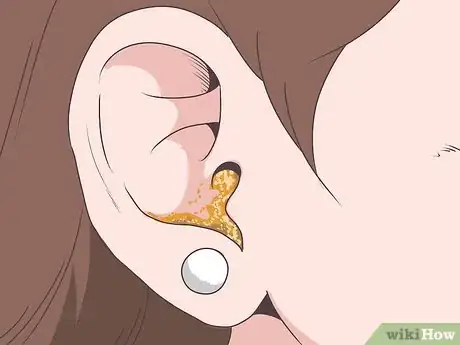

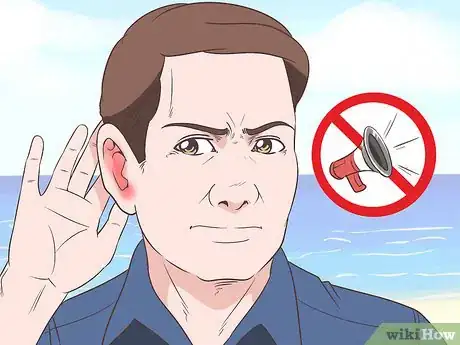



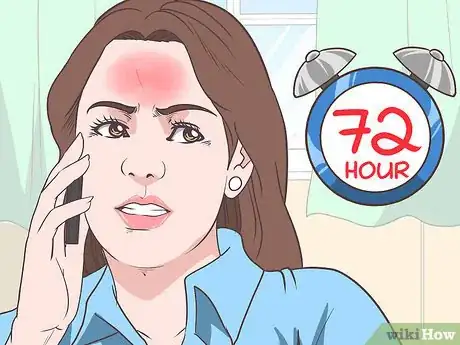
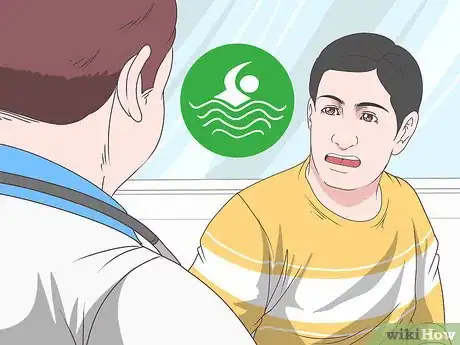
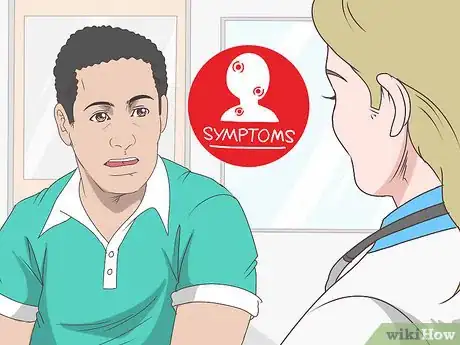
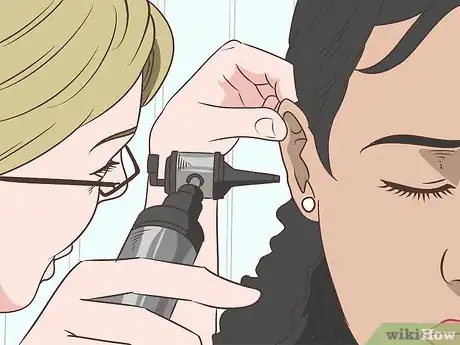




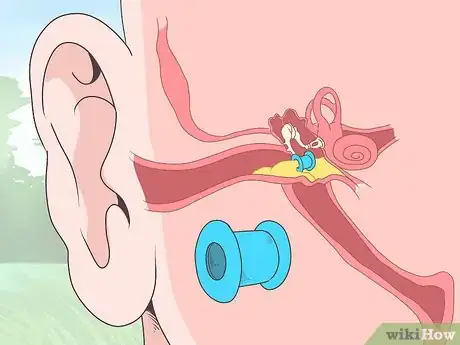







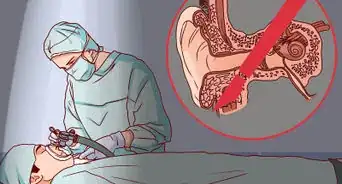













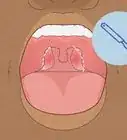






































Medical Disclaimer
The content of this article is not intended to be a substitute for professional medical advice, examination, diagnosis, or treatment. You should always contact your doctor or other qualified healthcare professional before starting, changing, or stopping any kind of health treatment.
Read More...